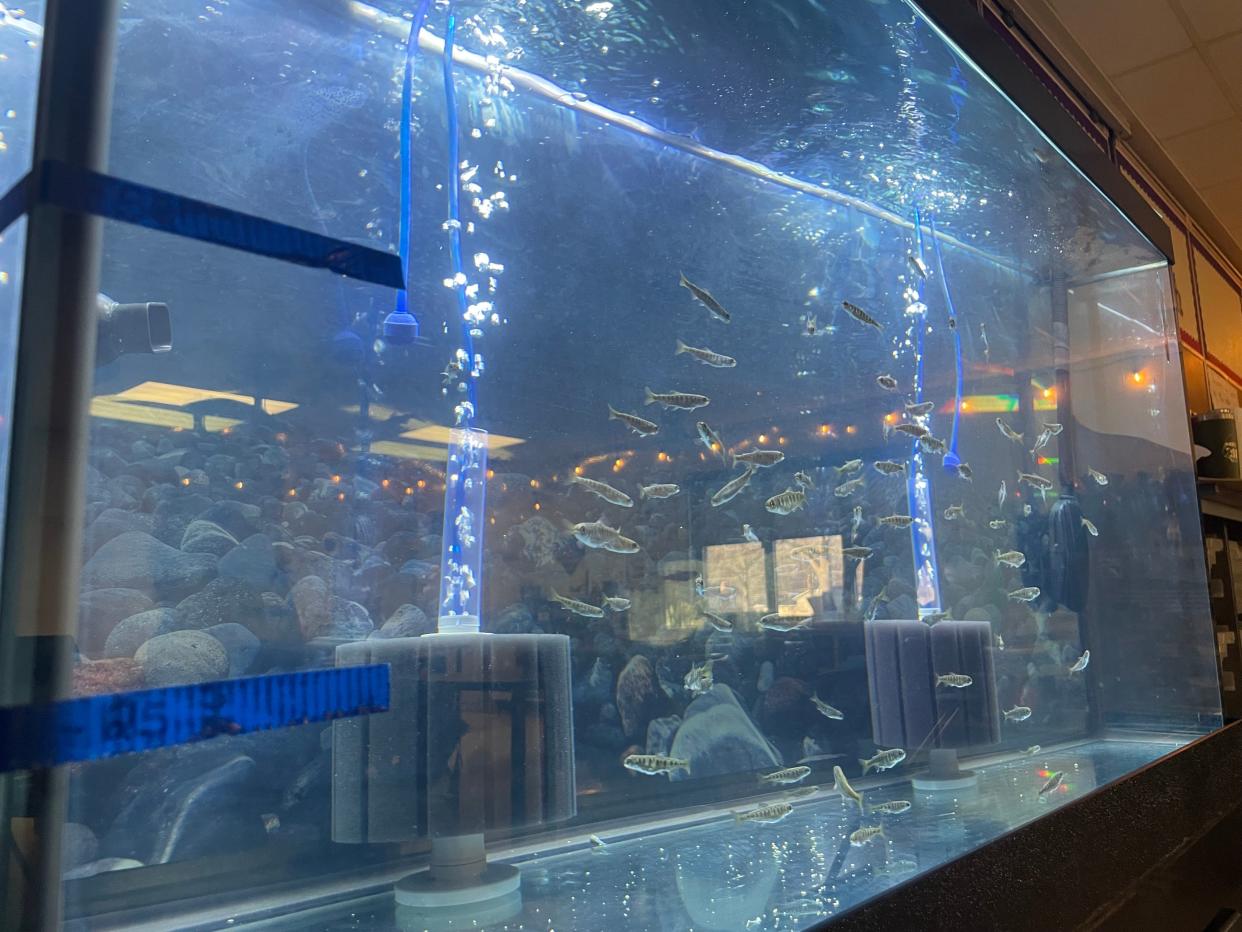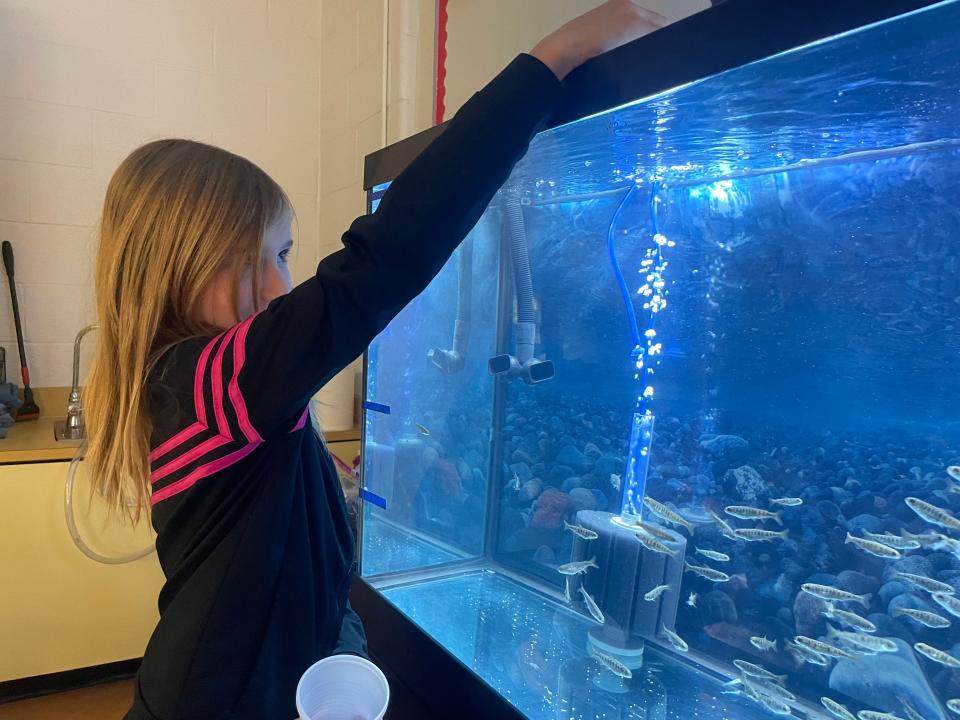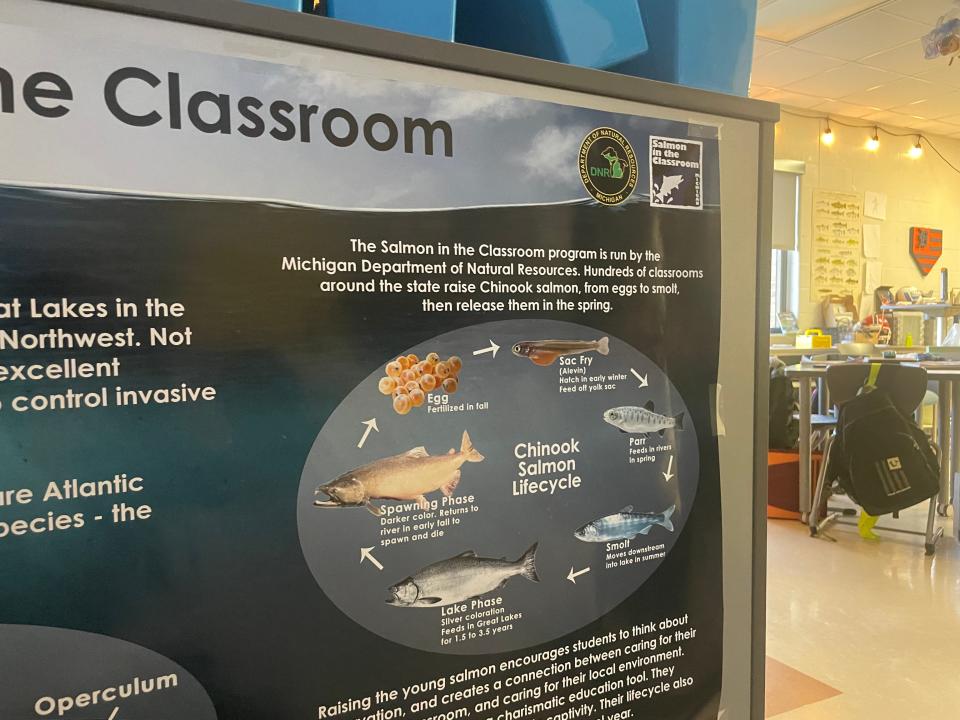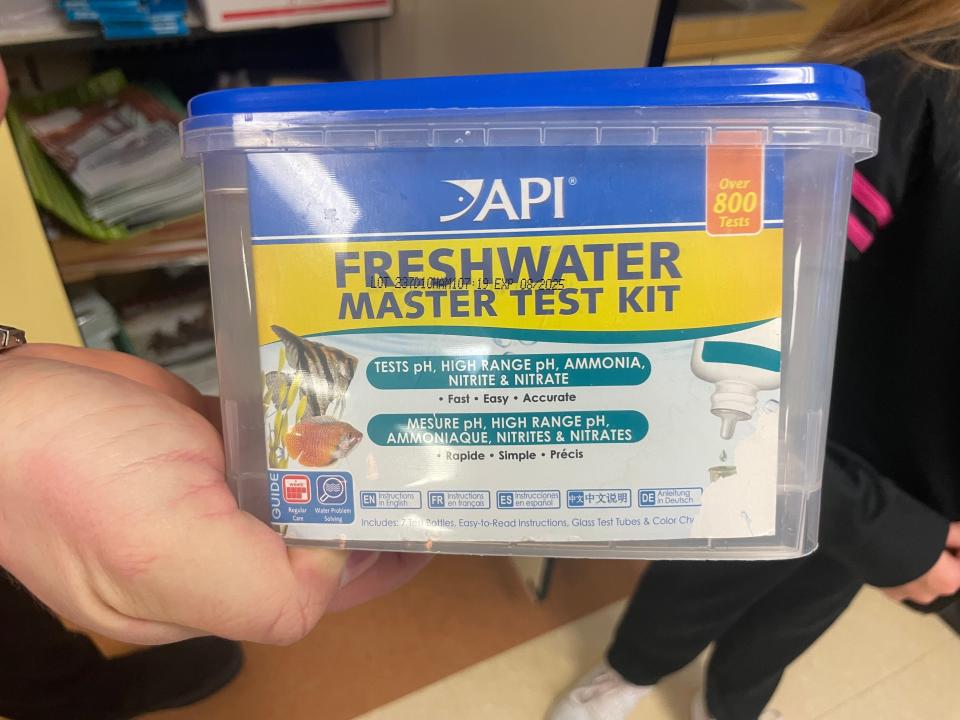More than a classroom pet: St. Clair County students learn through raising salmon

Students from St. Clair County are learning about the environment by raising salmon in the classroom.
Indian Woods Elementary School and Yale High School are participating in the Michigan Department of Natural Resources' Salmon in the Classroom. The program aims to teach students between third and 12th grade about natural resources and the environment.
Tracy Page, aquatic education coordinator for the DNR, said salmon are used because their lifecycles line up with the academic year.
“The program teaches students about the ecology in the Great Lakes ecosystems, invasive species and a lot of different topics,” Tracy Page said.
Each participating school received 125 chinook salmon eggs in November. The classrooms raise the fish and release them into pre-approved waterways in the spring.
Andrew Page, a fifth grade teacher at Indian Woods Elementary School, is new to the program. He said the fish have been thriving in his classroom. Right now, the fish are swimming around the tank, but are still too young to be released.
Andrew Page said the class plans to release the fish in the Black River sometime in May.
“My principal has been amazing through this entire thing,” he said. “She’s been so supportive of the program and this whole thing would not be possible without her help and leadership.”

The tank at Indian Woods Elementary is an Apex Neptune System donated by the Blue Water Sports Fishing Association. It allows the class to constantly monitor the tank both in-person and remotely. Andrew Page said the tank is the biggest contributor to the fish’s success.
Zoe Day, 10, is a fifth grader in Andrew Page’s class. She said her favorite part about the program is testing the water. Every Friday, she tests the tank’s nitrate levels.
“My favorite thing is seeing the water change color,” Zoe said.
Andrew Page said Zoe stayed after school to help build the tank when it arrived in the classroom. She said she liked setting up the water filter.
Andrew Page said the program is a way to teach his students more about the Great Lakes and rivers in the Blue Water Area. He said he wants to instill a passion for the environment and fishing in his students.
“It’s been a great experience and I’ve even noticed how the fish have changed the classroom,” he said. “I’ve seen the kids watching the fish and just be relaxed throughout the day.”
He said the fish have also helped teach his students responsibility and how to take care of something.
The salmon at Indian Woods Elementary may soon reach beyond the classroom. Andrew Page said he wants to set up a camera in the tank to livestream the rest of the life cycle. He is still working out how to do it and what streaming platform to use.

Steve Barr, a science teacher at Yale High School, has been participating in the program for the past four years. He said his students took a great interest in the program. After the first year with the program, Barr was able to create a class called Michigan Natural Sciences.
Students in the class not only participate in the Salmon in the Classroom program, but they also learn about environmental issues in the Great Lakes, do outdoor activities, build fishing rods and learn about Michigan ecosystems.
“It’s teaching kids how to take care of the Great Lakes so they can take care of us,” Barr said.
Barr’s students have a daily routine with taking care of the fish. They rotate responsibilities, test the water, feed the fish and monitor their growth.
Barr’s class will be releasing the fish at Mill Creek from Yale City Park, located at 7 Park Dr., at the beginning of May. Barr said he plans the release before graduation so the seniors in his class can participate.
“It fun for them to send the fish off as (the students) are getting ready to graduate,” he said.
The release day also coincides with a fishing trip for Barr’s class where they use the fishing rods built earlier in the year.
Barr estimates his fish tank cost between $1,800 and $2,000. It was completely paid for through donations from Yale businesses.

Barr said the best part of the program is how it impacts the students. He said it gets them involved in the outdoors and gets to care about the environment. He said he’s seen some of his previous students go to college to study environmental science because of the program.
“It’s impacting the students in a way to see what we have in the Blue Water Area and Michigan overall,” Barr said. “It’s something different that they might not have known about before.”
The goal of the program goes beyond teaching students about the Great Lakes and ecosystems. When the fish are released in waterways, the hope is that they will imprint on the waterways they were released in, and will come back to reproduce.
"That's the end goal, to reproduce and restock the Great Lakes," Barr said.
Tracy Page said the program has been going on for around 25 years. This year, 287 schools from across Michigan are participating. The DNR expects over 300 next year.
Teachers interested in becoming a part of the program next year can apply until April 15. Applications can be found at Michigan.gov/SIC. Materials provided by the DNR are free, however participating classrooms are responsible for building and paying for the aquarium.
Contact McKenna Golat at mgolat@gannett.com or (810) 292-0122.
This article originally appeared on Port Huron Times Herald: St. Clair County schools participate in Salmon in the Classroom program

